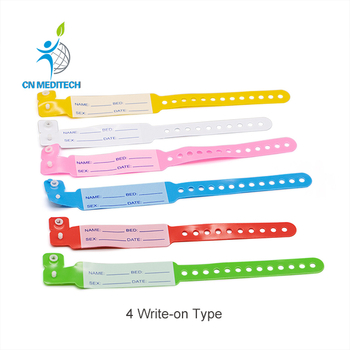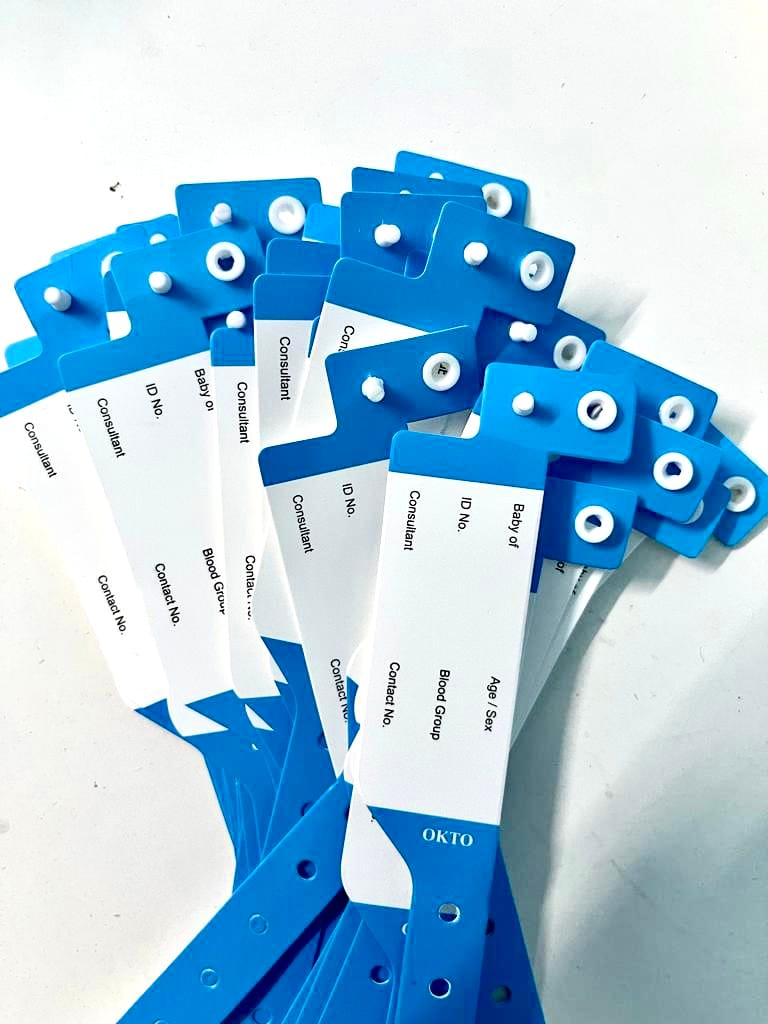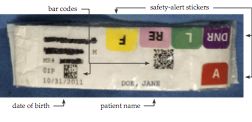How Patient Identification Band Decreases Threats in Patient Therapy and Care
How Patient Identification Band Decreases Threats in Patient Therapy and Care
Blog Article
Enhancing Safety: The Importance of Individual Identification Bands in Health Care
In the world of medical care, the effectiveness of individual recognition bands can not be overstated, as they serve as a fundamental guard versus misidentification and subsequent errors. As we discover the diverse role of these bands, it comes to be evident that their importance expands beyond mere recognition, raising concerns concerning ideal methods and future developments in client safety.
Overview of Person Identification Bands
Person recognition bands play a vital function in ensuring the safety and precision of client treatment in medical care setups. These bands, generally endured the wrist or ankle, work as a crucial device for confirming patient identification, thus minimizing the danger of mistakes in treatment, drug management, and various other health care treatments. Made from durable products, individual recognition bands frequently consist of vital information such as the client's name, day of birth, medical record number, and barcodes or QR codes for scanning.
The application of patient recognition bands is essential in various medical care environments, consisting of medical facilities, outpatient centers, and long-lasting treatment institutions. They add to a systematic method in person administration, making it possible for health care professionals to swiftly and accurately determine people, especially in high-pressure scenarios where swift decision-making is important.
Additionally, using these bands is aligned with governing criteria targeted at enhancing patient safety - Patient Identification Band. By guaranteeing that each client's info is easily verifiable and readily obtainable, doctor can keep a high requirement of care, lower the occurrence of adverse occasions, and foster a society of safety and security within medical care establishments
Advantages of Accurate Recognition
Precise identification is essential to boosting individual security and care high quality in health care settings. It acts as the very first line of defense versus mistakes that can lead to unfavorable patient end results. By guaranteeing that each patient is correctly determined through reliable methods, such as client recognition bands, healthcare suppliers can significantly reduce the danger of misidentification, which can bring about inappropriate therapies, medication errors, and also medical mix-ups.
In addition, precise individual identification promotes reliable interaction amongst medical care teams. When all team members can regularly identify individuals, they can share vital information more effectively, causing better control of care. This is particularly vital in emergency situation scenarios where timely interventions are vital.
Furthermore, accurate recognition supports compliance with regulatory criteria, thus lowering the threat of lawful consequences for healthcare facilities. It fosters trust fund between people and doctor, as individuals really feel much more secure knowing that their identities are being safeguarded.

Typical Challenges Encountered
Making sure effective person identification in health care settings offers a range of obstacles that can compromise security and care top quality. Patients may get here in a state of confusion or distress, making exact identification hard.
Another challenge is the dependence on human consider recognition treatments. Medical care professionals might inadvertently misunderstand or overlook identification methods, particularly in high-stress environments such as emergency divisions. This can lead to errors, including the administration of inaccurate therapies or medicines.
Technological concerns also position obstacles. Although digital wellness document (EHR) systems are made to improve client identification, system interruptions or individual errors can interrupt the procedure. Additionally, the physical style of patient ID bands can lead to readability problems, particularly in situations where bands are damaged or covered.
Last but not least, irregular training amongst staff regarding identification protocols can cause spaces in knowledge and look at more info practice. Addressing these difficulties is essential for enhancing person safety and security and making certain that identification bands offer their intended objective effectively.
Ideal Practices for Application
To efficiently implement person identification bands in health care settings, companies should adopt a multifaceted technique that focuses on technology, standardization, and training combination. Standardization entails developing clear protocols for the design, application, and use identification bands throughout all divisions. This guarantees uniformity and reduces the threat of errors connected to differences in band kinds or labeling approaches.


Training is crucial for all health care staff to guarantee they comprehend the value of precise patient recognition, exactly how to properly review and apply recognition bands, and the procedures to adhere to in case of disparities. Regular workshops and refresher course courses can enhance this understanding and promote a culture of security.
Technology combination plays a critical role in improving the efficiency of person identification bands. Making use of barcode scanning or RFID technology can enhance the recognition process, enabling real-time verification of person identities. Furthermore, digital basics health record systems need to be set up to include informs for mismatches in between the identification band and individual data.
Future Trends in Client Safety And Security
As medical care continues to progress, the focus on patient safety is likely to intensify, driven by innovations in technology and a higher understanding of systemic dangers. Emerging fads suggest a change in the direction of more integrated systems that utilize information analytics, expert system, and artificial intelligence to boost client identification processes. These innovations can assist determine prospective safety and security problems before they escalate, thus reducing mistakes related to misidentification.
In addition, the execution of blockchain technology may transform exactly how patient data is securely shared among healthcare service providers, making sure that recognition bands are continually exact and up-to-date. This will certainly not just improve patient safety yet additionally assist in seamless communication throughout multidisciplinary groups.

On top of that, the expanding emphasis on personalized medicine is expected to affect person safety protocols. By integrating group and hereditary details into identification systems, medical care professionals can tailor treatments better, decreasing the risks of negative reactions as a result of misidentification.
Conclusion
Finally, patient identification bands act as a crucial part in enhancing security within healthcare environments. By facilitating accurate client recognition, these bands dramatically decrease the danger of errors related to misidentification, unsuitable treatments, and medication management. Regardless of difficulties in application, adherence to best practices and the integration of arising innovations can even more enhance their effectiveness. Ultimately, the ongoing focus on robust recognition he has a good point methods will add to better individual outcomes and total safety and security in medical care settings.
In the world of medical care, the effectiveness of individual identification bands can not be overstated, as they offer as a fundamental protect against misidentification and succeeding errors.Person identification bands play an essential duty in guaranteeing the safety and security and accuracy of person care in healthcare setups. Made from durable materials, person recognition bands commonly include vital details such as the client's name, day of birth, clinical document number, and barcodes or QR codes for scanning.
By guaranteeing that each individual is appropriately identified via trustworthy means, such as person identification bands, healthcare service providers can significantly minimize the threat of misidentification, which can lead to inappropriate treatments, medicine mistakes, and also surgical mix-ups.
In final thought, patient recognition bands offer as an essential component in enhancing security within health care settings. Patient Identification Band.
Report this page